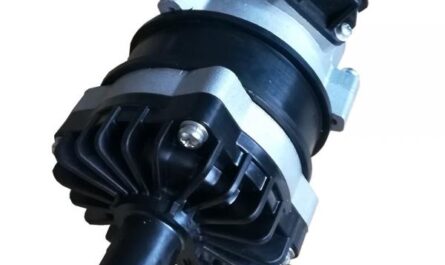Introduction to Scaffold Technology
Scaffold technology is a method of tissue engineering used to repair or replace damaged tissues and organs in the body. It involves using biodegradable scaffolds that provide structural support and biochemical cues to guide the regeneration of new tissues. When implanted in the body, these temporary scaffolds help direct the re-growth of cells and formation of new functional tissues.
Key Requirements of Tissue Engineering Scaffolds
For Scaffold Technology to be effective in a tissue engineering application, they must meet certain structural and functional requirements:
Biocompatibility – Scaffolds must be made of materials that are non-toxic and well-tolerated by the body. They should not elicit any inflammatory or immune responses.
Biodegradability – Scaffolds provide only a temporary support structure and should gradually degrade over time as the new tissue forms. They must degrade at a rate matching the tissue regeneration process.
Porosity and Pore Size – Scaffolds need to have an interconnected porous structure to allow cell infiltration, diffusion of nutrients and metabolic waste. The pore size affects the rate of tissue in-growth.
Mechanical Integrity – Scaffolds must have suitable mechanical properties to match the load-bearing requirements of the tissue they are replacing. The mechanical integrity decreases as the scaffold degrades in vivo.
Cell Attachment – Scaffolds should promote cell attachment, proliferation, differentiation and formation of extracellular matrix through cell interactive cues. Surface properties like surface chemistry and topology play an important role.
Vascularization – For thicker tissues, scaffolds need to induce rapid vascularization as diffusion of nutrients is limited beyond 200μm from blood vessels. They can be designed to release pro-angiogenic growth factors.
Modulating the Immune Response – Scaffolds can be designed to either enhance or suppress certain immune responses by incorporating biomolecules to influence immune cell behavior. This helps achieve better tissue integration and regeneration outcomes.
Commonly Used Scaffold Materials
A wide variety of natural and synthetic biomaterials have been explored for developing tissue engineering scaffolds:
Natural polymers like collagen, fibrin, chitosan, alginate and silk are biocompatible and contains cell-interactive motifs but their properties are difficult to control.
Synthetic polymers like polyglycolic acid (PGA), polylactic acid (PLA), polycaprolactone (PCL) offer better processability and mechanical properties but lack cell interactive signals.
Bioceramics like hydroxyapatite and tricalcium phosphate are useful for hard tissues but are brittle in nature.
Composite scaffolds combine the advantages of different material types for optimizing scaffold properties.
Decellularized tissue scaffolds derived from organs and extracellular matrices provide natural cues but sourcing can be an issue.
Scaffold Fabrication Techniques
A variety of techniques allow fabrication of scaffolds with tailored architecture, porosity and pore sizes suitable for different tissues:
Freeze drying/lyophilization – Involves freezing a polymer solution/particle suspension followed by vacuum drying to get highly porous foamed scaffolds.
Solvent casting/particulate leaching – Polymer solutions are cast containing porogen particles which are then leached out to form pores.
Gas foaming/templating – Gases are used to induce pore formation within polymer solutions/melts under controlled conditions.
Electrospinning – An electric field is used to produce nanofibrous meshes mimicking the ECM architecture.
3D printing – Layer-by-layer deposition of materials allows construction of scaffolds with complex internal structures.
Microfluidics – Microchannels are used to fashion scaffolds with intricate multi-scale porosity and localized composition.
Advances in Scaffold-Based Tissue Engineering
With ongoing research, scaffolds are being designed for an increasing number of tissue types:
– Skin – Bilayered electrospun scaffolds facilitate regeneration of epidermis and dermis layers.
– Bone – Composite hydroxyapatite/PLA scaffolds coupled with growth factors have yielded successful clinical outcomes.
– Cartilage – Chondrocyte-seeded PCL scaffolds are a promising strategy for treating cartilage lesions.
– Blood vessels – Fibrin-based tubular scaffolds containing vascular cells are under clinical trials for creating small-diameter grafts.
– Heart – Patch-based scaffolds help restore organization and function in infarcted hearts. Cell sheet engineering is another exciting approach.
– Liver – Decellularized liver ECM scaffolds repopulated with hepatocytes show metabolic functionality in vivo.
– Pancreatic islets – Composite PCL-alginate microcapsules create an immunoisolated niche for transplanting islets.
– Nerves – Coaxially extruded PCL conduits containing guidance molecules promote long gap peripheral nerve regeneration.
Future Directions and Conclusion
Scaffold-based tissue engineering has made tremendous advances but more research is needed to address hurdles like lack of vascularization, cellular communication and tissue organization at the organ level.
Future directions include:
– Development of multi-functional scaffolds that bioprint vascular networks, promote cell-cell communication and mimic organ-level complexity.
– Incorporating cell recruits, morphogens and other molecular cues in precise spatiotemporal patterns to guide tissue development.
– Use of designer biomaterials, decellularized tissue technology and organoids to better mimic the native tissue niche.
– Application of systems biology approaches to gain insights into organogenesis and regeneration for next-generation scaffold design.
In conclusion, with continued research and innovation, scaffold technology is primed to transform regenerative medicine by facilitating the reconstruction of increasingly complex functioning tissues for clinical use. It promises solutions for debilitating diseases and conditions that presently have limited treatment options.
*Note:
1. Source: Coherent Market Insights, Public Source, Desk Research
2. We have leveraged AI tools to mine information and compile it.



